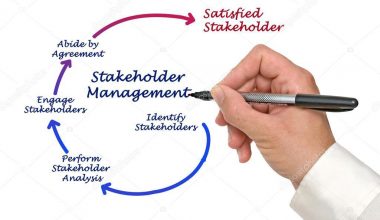Many nations and industries on the global scale are becoming aware of the rising problems related to climate change. Therefore, sustainable practices are being encouraged and implemented in different methods. From governments, businesses, and agencies to organizations and industries, sustainability is a rising trend that’s definitely going to be a mainstay. Individual and business consumers contribute to the environment’s decaying state, and it’s everyone’s responsibility to mitigate such risks.
If you’re in the manufacturing sector, the good news is that there are various ways to implement sustainable practices into your workflow and processes. It’s time to gain a competitive advantage over the rest of the market players as many people support sustainable companies more than anything. Switching to sustainable manufacturing doesn’t have to be grand at initial launching.
You can switch to more sustainable manufacturing operations with doable and straightforward efforts. Check out some ideas below:
#1. Be Conscious Of Your Waste
Keeping waste to a minimum is an excellent way to improve sustainability in your manufacturing plant. To reduce the amount of surplus and byproducts, you must first review your manufacturing process. Check and evaluate whether some components and procedures can be foregone and skipped. From its preparation phase down to the branding and packaging, ensure that no byproducts are inefficient and wasteful.
Sometimes, there can be a waste of ingredients and resources. For instance, check out https://ptmi.net/products-draft/paper-roll-saws/ and notice how broken and damaged paper can be salvaged and made functional once again. Check out your overall operations and procedures and see whether similar practices and strategies can be applied to eliminate or control waste accumulation.
As a general rule, manufacturers should consume only what’s needed to complete the final product. Reevaluating the systems and processes of manufacturers may also provide opportunities for waste reduction. Sustainable manufacturing practices should always seek to use as little energy and resources as possible in every cycle. When you look at the bigger picture and how harmful waste can do to the environment, you’ll be surprised to find ways to improve your manufacturing processes better.
#2. Optimize Your Energy Uses
There’s no doubt that the manufacturing industry uses up a lot of energy and fossil fuels in the entire nation’s consumption. As global energy prices rise, organizations that take steps to reduce their energy consumption or consider alternative energy sources can reduce costs and improve sustainability. This is a great initiative that helps the entire nation and the environment in totality. But how can you do so?
Some strategies for conserving energy include as trivial as switching off all the lights and unplugging machines after they’ve been used for the day. Also, it’s good practice to go for energy-efficient office devices and equipment. Your computer should be in energy-saving settings, and you can switch all your lighting fixtures to LED since it’s more energy-effective.
#3. Opt For Sustainable Materials
Many companies integrate sustainability into the production process itself, not just their practices and operations. As a manufacturer, your primary components revolve around things that can harm the environment. There’ll be many kinds of materials involved in manufacturing. One way to convert to sustainable manufacturing is to go for sustainable materials.
Manufacturing materials based on sustainable materials can also provide a competitive edge and help impact the entire industry as other companies can follow suit with your green practices. The key is to assess your production processes and components and see which ones can be converted into sustainable materials.
#4. Consider Using Renewable Energy
When the budget permits, you can explore other sources of alternative energy. This could include solar panels, wind turbines, or even hydropower technology. Embrace renewable energy fully if you’re looking to improve your manufacturing’s sustainability. You can explore other natural resources that can be converted into energy. Depending on your geographic location, it’s possible to generate power sources from wind, solar power, and hydro.
These are all clean energy that doesn’t harm the environment compared to using fossil fuels. If you compare them with traditional fossil fuels, they can reduce your energy bills on a larger scale, reducing your utility cost, which can yield cheaper manufacturing costs. Using renewable energy is as simple as looking at your energy survey results and finding examples of new technology. Before applying new technologies to your manufacturing processes, make sure they’re realistic, efficient, and viable in the long run.
For instance, solar systems are some of the best to start with since they can be installed almost immediately and start making a difference. You can shell out an initial investment and reap the rewards in the years to come. Businesses can also benefit from renewable energy in the form of incentives. Depending on your local government, some offer incentives for companies and households using renewable energy sources.
#5. Improve Your Business Operations
In almost every manufacturer, employees work in a facility where products are created, the supply chain is managed, and the office space is provided. Such facilities need to use utilities, resources, fixtures, and so on. When a company optimizes its operations, it saves money and resources. Look at the workflow of your manufacturing processes and see if there’s a need to secure a warehouse, an office, or use specific equipment for the operations.
Be on the lookout for indications of waste in your production data. Material waste, energy wastage in mechanical equipment, overstaffing, and so on could all contribute to this. Avoid wasting energy, materials, and labour on garbage that you don’t need to produce quality products. Don’t add steps or equipment to the production process unless these will add value or minimize waste.
#6. Upgrade Your Machinery And Equipment
One of the reasons your utility expenses monthly are so high is probably due to your vintage and outdated manufacturing equipment and machines. Aged devices may have taken a toll on their function, so they need to work harder, but they work slower. Ensure you’re not using outdated or inefficient machinery or equipment at your workplace. Invest in additional equipment like industrial compactors if necessary in your processes.
With the new technology, you could potentially reduce the amount of energy you use while increasing the speed of your production line. Depending on the products you manufacture, some advanced equipment may have been developed, which allows you to produce output more efficiently. Automation and the Internet of Things (IoT) are two of the most helpful features for your manufacturing systems and software.
The best method is implementing a fully automated production line that relies heavily on robotics. By doing so, you can remove most of the human errors attributed to manufacturing. As a result, your business can reduce the amount of waste produced during the process. It can be much more economical with the raw materials you use.
#7. Get All Team Members Involved In Your Sustainability Practices
Become more sustainable by involving your employees, so they’ll be motivated and connected to the mission of your company. Your sustainable practices become more effective and optimal when all the team and company members are committed. You may also find that your employees have ideas to increase your sustainability practices and reduce costs. Everyone can benefit from the results of a more sustainable company in the long run.
#8. Consider Using Sustainable Packaging
Some packing materials can be recycled. When choosing the right packaging for your product, ensure to go for sustainable materials. Manufacturing companies should be aware of how parts and products are packaged. This initiative can increase customers who are advocates of green practices. After all, beautiful packaging shouldn’t be ugly for the planet.
Check out whether your products can be safely packaged in sustainable packaging, which uses recyclable materials. Keep your packaging simplified, preceding unnecessary fillers but ensuring safety at the same time. The key is to find suppliers who can provide you with the best green packaging options for your products. By opting for sustainable packaging, you’ll gain a competitive advantage and earn the hearts of many environmentalist consumers.
#9. Recycle As Much As Possible
Recycling will always be an effective method to convert to sustainable practices. Manufacturing companies can maximize waste minimization while reducing their environmental impact with an effective recycling solution. Recyclable waste is a vital component of green manufacturing. Furthermore, manufacturers can determine the most effective way to separate materials that can be recycled by modifying the workflow. Initially, you’ll need to go over your manufacturing procedures and materials and discover which byproducts and components can be salvaged after the procedures.
Some companies don’t recycle properly, which may seem like an obvious problem. It’s high time that you check this aspect in your operations. You’ll realize how much cost savings recycling can actually yield for your business. In order to contribute to sustainability, manufacturers can recycle as many materials as they can and do so in a way that’s consistent with other aspects of sustainability.
Conclusion
Maintaining competitiveness and reducing unnecessary costs can be achieved through sustainable manufacturing. Although this isn’t an easy feat, it can possibly be achieved by applying the pointers mentioned in this article. No matter what product you manufacture, there will always be alternative resources and simpler processes that don’t contribute to the planet’s decay. You can see an improvement in your company’s business outlook and revenue by staying on top of sustainability trends.
Related Articles
- GREEN ENERGY COMPANIES: 15 Best Green Energy Companies To Invest in The UK
- Sustainable Competitive Advantage: Simple Steps to Gain a Sustainable Competitive Advantage
- Social Marketing Strategy: Definition & Examples
- Family Business Succession Planning: Creation, Template, Model, and Sustainability
- The Perks of Deploying Sustainable Energy for Industry







1 comment
Hi, Great article!
I’m really enjoying reading your posts. This is well worth a read. You presented great insight and information.
Thanks.